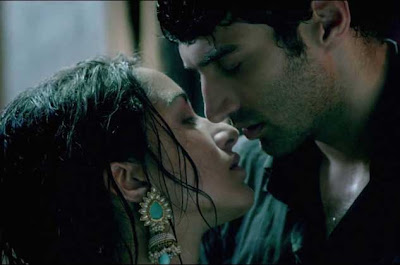The sequel of Mahesh Bhatt's Rahul Roy and Anu Agarwal
starrer Aashiqui, Mohit Suri's Aashiqui 2 is the
recreation of the sensibilities of the 90s, where love makes one
person so important that he/she can make or break your life. However,
the sad thing is, just like its predecessor, Aashiqui 2 too,
is a music album in search of a film.
Aaditya Roy
Kapur plays Rahul Jaykar, a fallen star, who squandered his fame and
skill by enslaving himself to alcohol. He encounters Aarohi Shirke
(Shraddha Kapoor), a singer at a bar and sees potential in her. He
decides to give her the chance she deserves and make her a star like
he was. And in the midst of all this, Aashiqui 2 superficially
chronicles the story of their relationship.
Just like
any mediocre film of the 90s, the director tries to establish the
character's story in one single montage or simply a verbose scene
between two characters who, by the way, are too uni-dimensional and
lack depth. Rahul's catch phrase "Suno naa..kuch nahi, bass
yuun hi" best describes what the director is also trying to
do to the audience.
Aaditya Roy
Kapur's performance is the only positive that can be taken from the
film, but he too is inconsistent. But consistency of a character has
its flaws rooted in the script; and seeing that it demanded Roy Kapur
to look unquestionably stoned at certain points, he delivers.
Shraddha Kapoor has a pretty face and is tolerable to say the least.
Tulsi Kumar's voice simply doesn't go with that face and the audience
tends to reject it like a bad organ transplant.
The talking
point of Aashiqui was its 11-song-soundtrack with Kumar Sanu
leading the charge. The real test for Aashiqui 2, now, is
whether it manages to dominate the ringtones and cassette players in
autorickshaws for the next 20 years. Sickeningly romantic, the music
sounds like 2005 and the lyrics, 1985. Hum mar jayenge is a
little too outrageous for a generation that sincerely believes in Jaa
Chudail. The selling point of the film is the song Tum Hi Ho
and the audience is at its most attentive when it makes its
appearance in the film. This speaks volumes of how little Aashiqui
2 has to offer. If songs are all that you want to sell, making a
film about them is the most expensive an unfruitful way to go about.
Rating: 2 out of 5
Published in DNA (Pune) on April 27, 2013





